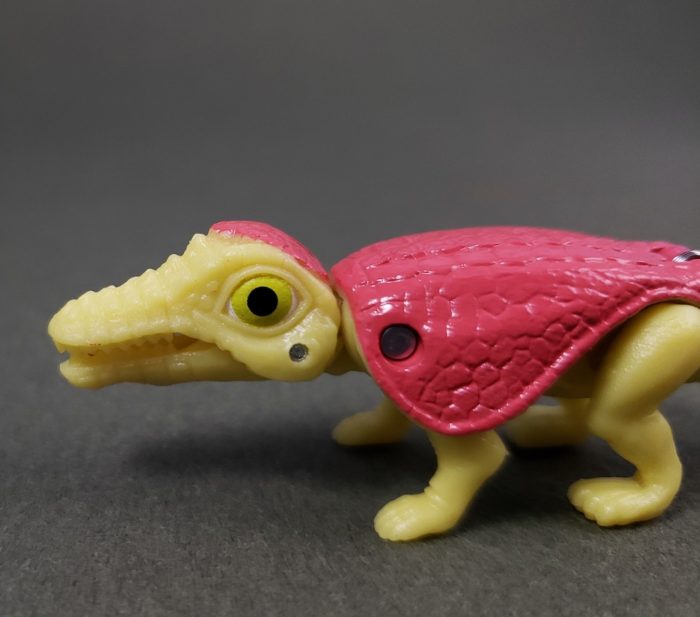There are only about 22 species of crocodilians now living, but they belong to a much larger and more ecologically diverse group called Pseudosuchia. Pseudosuchia includes the living crocodiles and gharials as well as the crocodile stem-group, namely the vast array of extinct animals more closely related to crocodilians than to birds.
Classification: Crocodile
Review: Dakosaurus (PNSO)
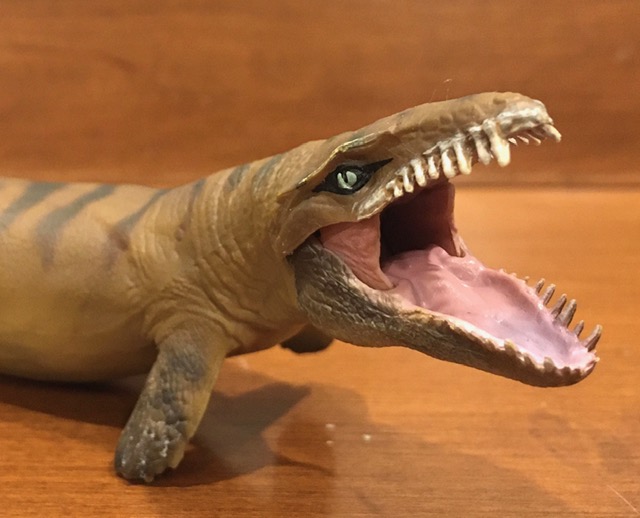
Dakosaurus means “biter lizard,” a most appropriate name for any metriorhynchid. There are currently two recognized species: D. maximus from throughout Europe and D. andiniensis from Argentina. Unlike other metriorhynchids, D. andiniensis possessed a noticeably short, deep snout, which has led it to be nicknamed “Godzilla.” It is also the geologically youngest known metriorhynchid, hailing from the Early Cretaceous as well as the Late Jurassic.
Review: Deinosuchus (Carnegie Collection by Safari Ltd)
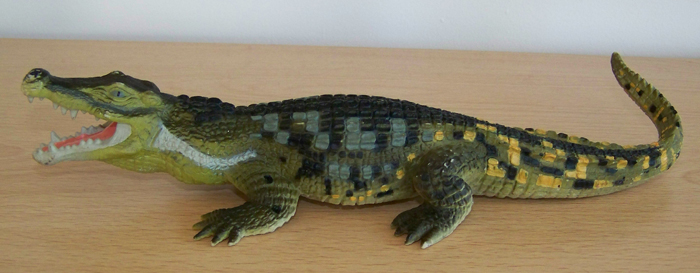
There aren’t many prehistoric crocodilian figures, but out of the very few there are, the Carnegie Collection Deinosuchus stands out.
Deinosuchus was a big alligator (well technically it wasn’t an alligator- but it was more closely related to alligators than to crocodiles) from prehistoric Texas.
Review: Deinosuchus (Recur)

Review: Deinosuchus (Replica-Saurus by Schleich)
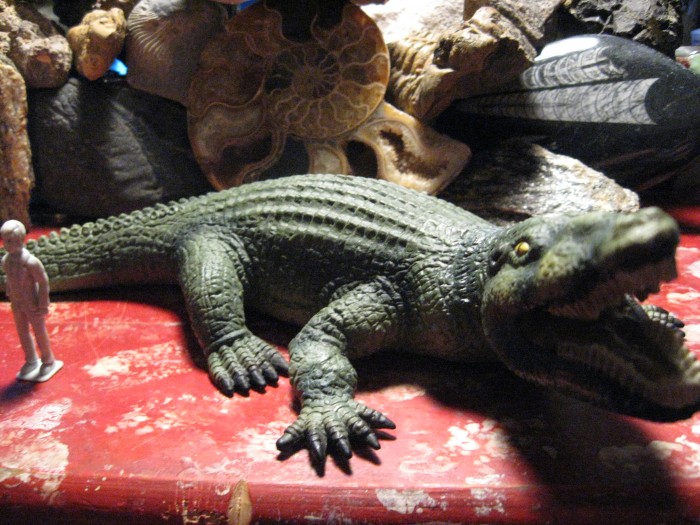
Review: Deinosuchus vs. Parasaurolophus Diorama (Dinosauria by Sideshow)

Photos by Jeremy Killian
The fifth entry in Sideshow’s Dinosauria line features a predation scene like many others, yet with only a single true dinosaur. Deinosuchus vs. Parasaurolophus looks to be an almost classical depiction of violence in the natural world, the massive jaws of a monstrous crocodilian clamping down on a hapless creature that was presumably ambushed while drinking at the water’s edge.
Review: Dino Trackers Minis (Jurassic World by Mattel)
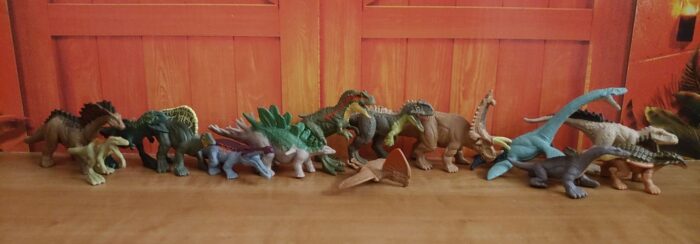
Review and photos by Faelrin, edited by Suspsy
Being a heavy collector of the Mattel Jurassic World line, it’s not often I give attention to their fantastic line of minis despite having collected a good portion of them ever since the line’s launch in 2018. In fact, this is probably my first review of these particular types of figures.
Review: Dinosaur Boxset 2 (Toyway)
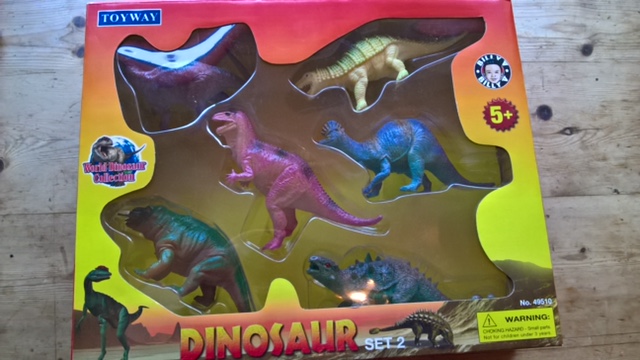
We’ve all seen them. The crude dinosaur toys that you get in small museum shops for extremely cheap prices, normally just bought by parents to keep their children quiet for a while. The last thing you’d expect is to put six of these together and sell them as a box set.
Review: Dinosaurs Of Japan (Capsule Q Museum by Kaiyodo)
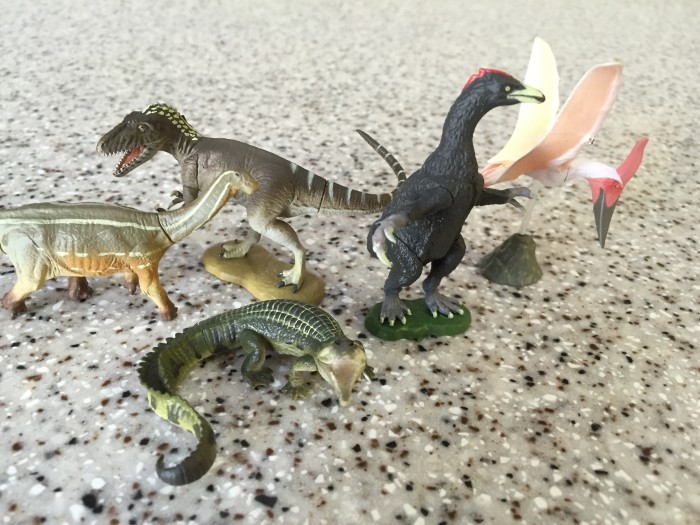
Review: Gryposuchus (Jurassic World Epic Evolution, Wild Roar by Mattel)

Now here’s something unprecedented from Mattel. No, not a prehistoric pseudosuchian most people have never heard of. Mattel likes those, and this is that too. What makes this one unique is that it represents an animal that lived during the Cenozoic. The era immediately following the Mesozoic and the one in which we’re currently living.
Review: Kaprosuchus (DINOSAURS by Schleich)
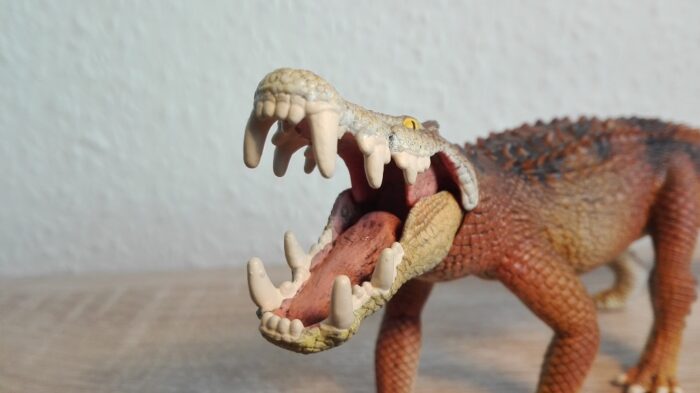
Review and photographs by Stolpergeist, edited by Suspsy
It’s about time to look at Schleich’s 2021 releases, starting with their Kaprosuchus. The animal in question is a mahajangasuchid crocodyliform from the Late Cretaceous of Niger. The known material is restricted to the skull, so that is the part most attention has to be given when reconstructing Kaprosuchus.
Review: Kaprosuchus (Papo)

Papo’s 2016 Kaprosuchus figure is positively massive, far more so than I originally anticipated. It measures 22 cm long and is slightly over 10 cm tall due to its raised tail.

